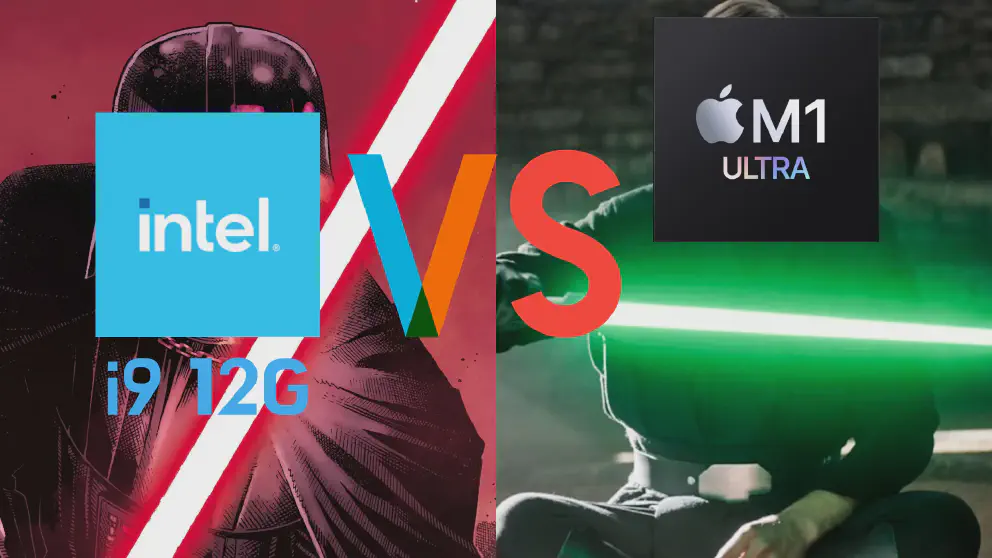In the spring Apple Event in March 2022, Apple lifted the shroud and unveiled the M1 Ultra and together with it a brand new Mac: the Mac Studio. Maybe it is too early to tell at this point, but the unveiling is not only changing Apple Mac and future product lineup, but potentially changing the entire personal computing game in a very significant way. So we now know that M1 Ultra is the most powerful Apple Silicon yet from Apple, but is it enough to challenge the major players like Intel and AMD on the CPU front as well as Nvidia on the discrete graphics front? We shall find out.
Executive Summary:
- Apple M1 Ultra is Apple latest silicon for desktop computers and was launched on March 2022 on the Mac Studio platform.
- Apple M1 Ultra combine two M1 Max chip through a chip to chip interconnect called HyperFusion which is fast enough to mimic two chips as a single monolithic chip
- Intel Core is now at the 12th generation and has made significant changes compared to previous generation which make it currently one of the fastest, but most power hungry chip at the moment
- Early benchmark results shows that the Intel chip still ahead at single core performance but multicore performance shows the M1 Ultra is way ahead of Intel Core i9
- One of the keypoints is that Apple manages to get this much performance while maintaining a TDP of 60W, which is very easy for Apple to bump up to increase performance.
Apple M1 And the Jade Family
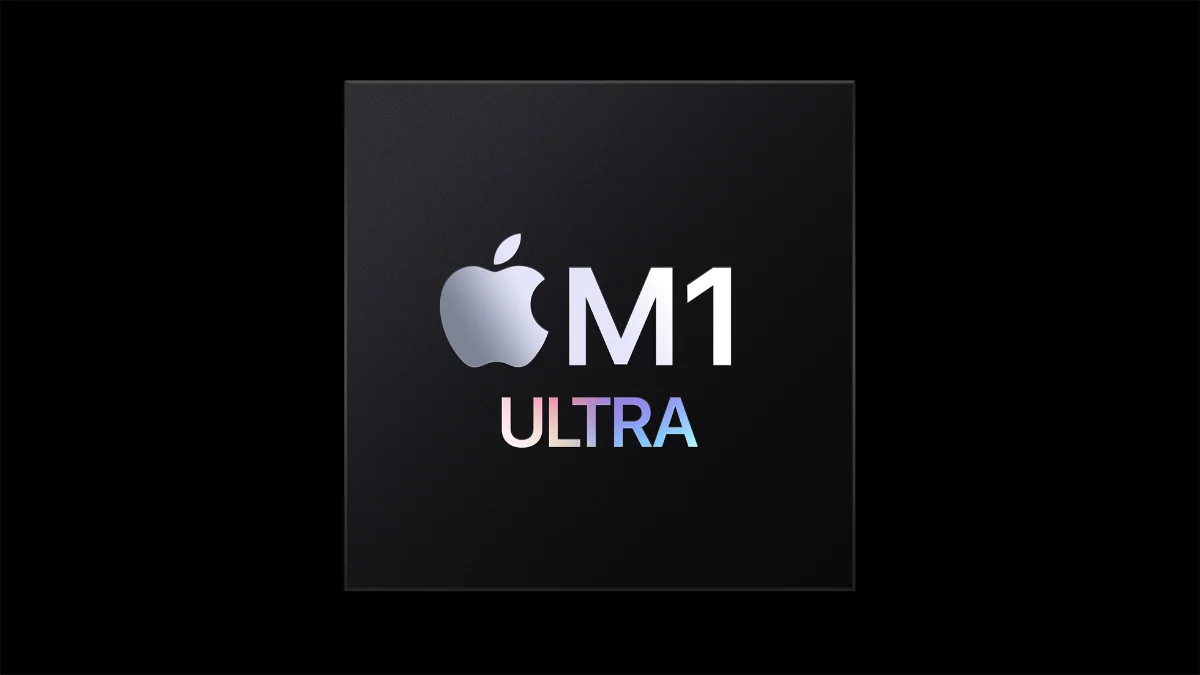
Spoilers: Apple M1 Ultra as of March 2022, is not only the most powerful Apple Silicon to date, it is the most powerful chip in their entire product line up beating even the $7,000 28-core Xeon chip on the Mac Pro.
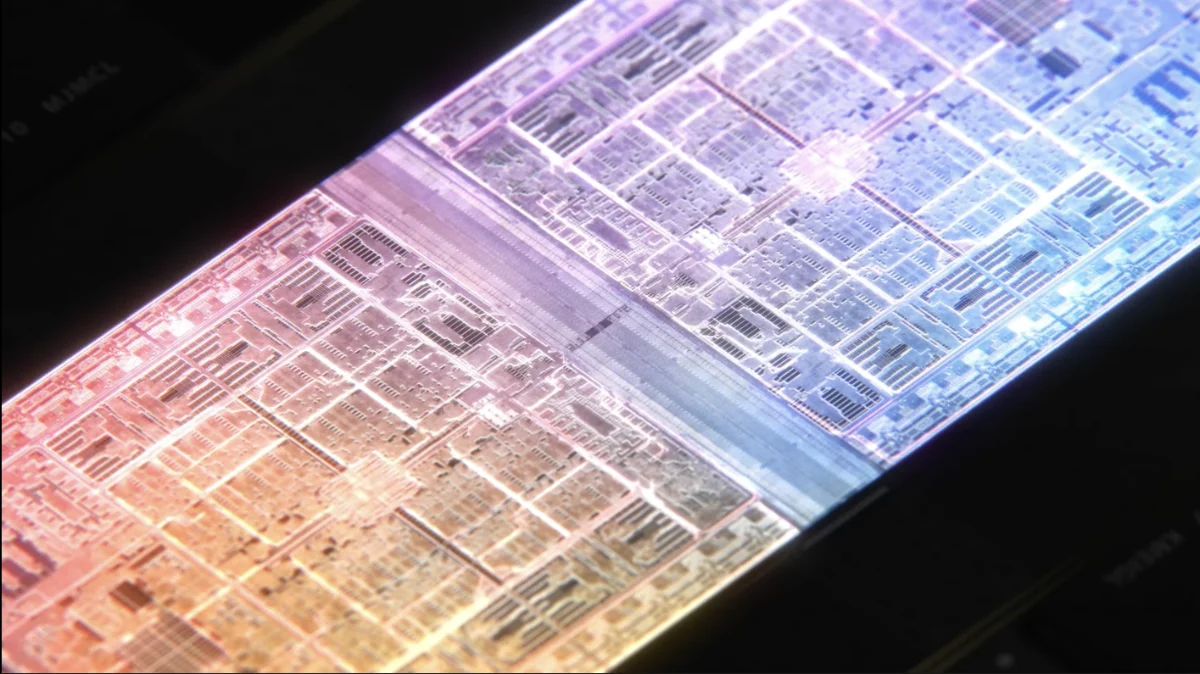
The M1 Ultra is the culmination of Apple Silicon planning and design which results in one would possibly say, one of the most powerful chips ever made, and according to sources, it is not the final form of the M1 series. M1 Ultra linked two M1 Max chips via chip to chip interconnect at the bottom of the M1 MAx chip. The interconnect spans the entire bottom part of the chip. The result: chip to chip bandwidth is around 2.5 TB/s, the connection is fast enough that Apple can identify the entire silicon as a single chip instead of two chiplets solving many headaches when doing SMP programing and a humongous chip that has around 20 computer cores (16 performance and 4 efficiency), 32 neural processing cores and a whopping 64 graphic cores.
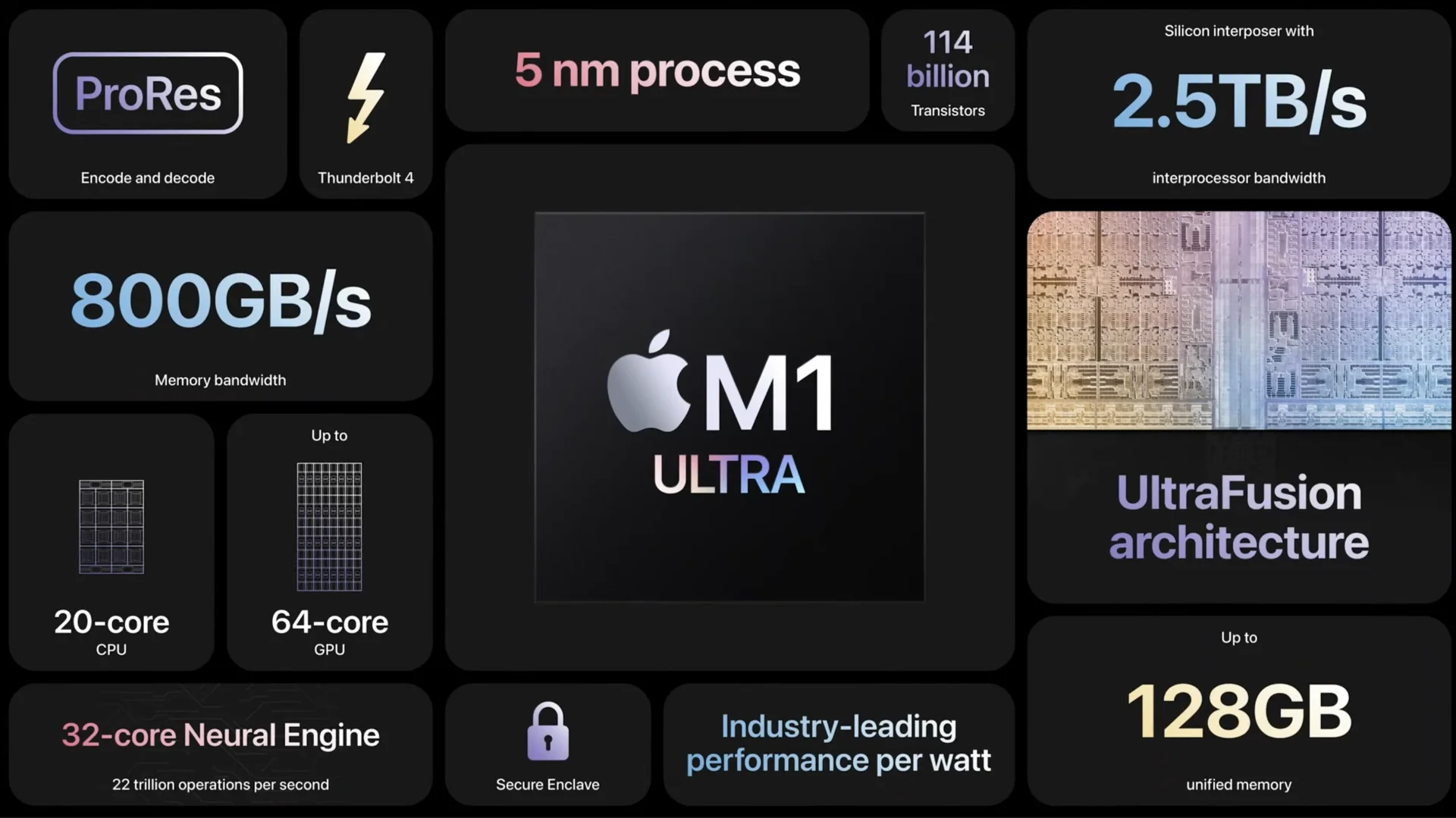
Capabilities is something that you would find in a high end workstation: 128 GB RAM support, 4 media engines that can do 18 8K ProRes 422 streams and 4 hidden Apple Matrix Engine (AMX). 64 graphic cores is supposed to have the same performance as Nvidia RTX 3090 according to Apple. And the 20 core compute core Apple claims to have the same performance as Intel’s latest 12th gen Core i9 processors.
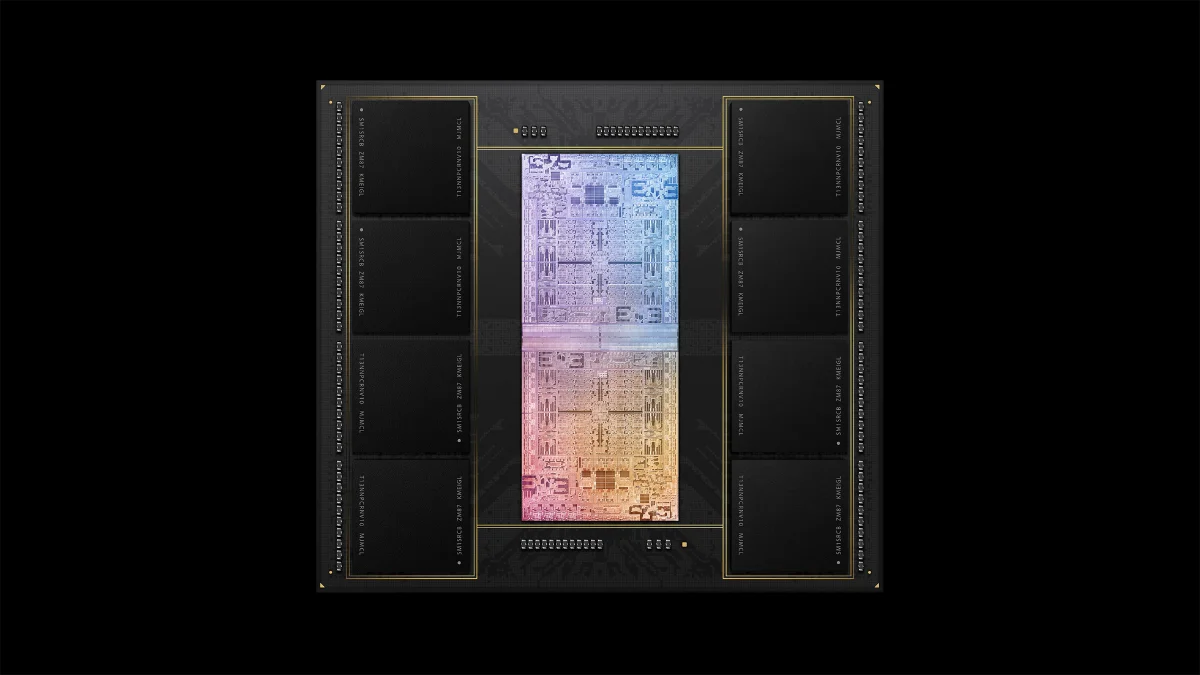
During the Apple presentation, Apple emphasized performance per watt. According to Apple, not only is the Apple M1 Ultra chip competitive and sometimes beating Nvidia and Intel’s best chips, they do so at far less power consumption, at around 60 percent less.
The M1 family summarized
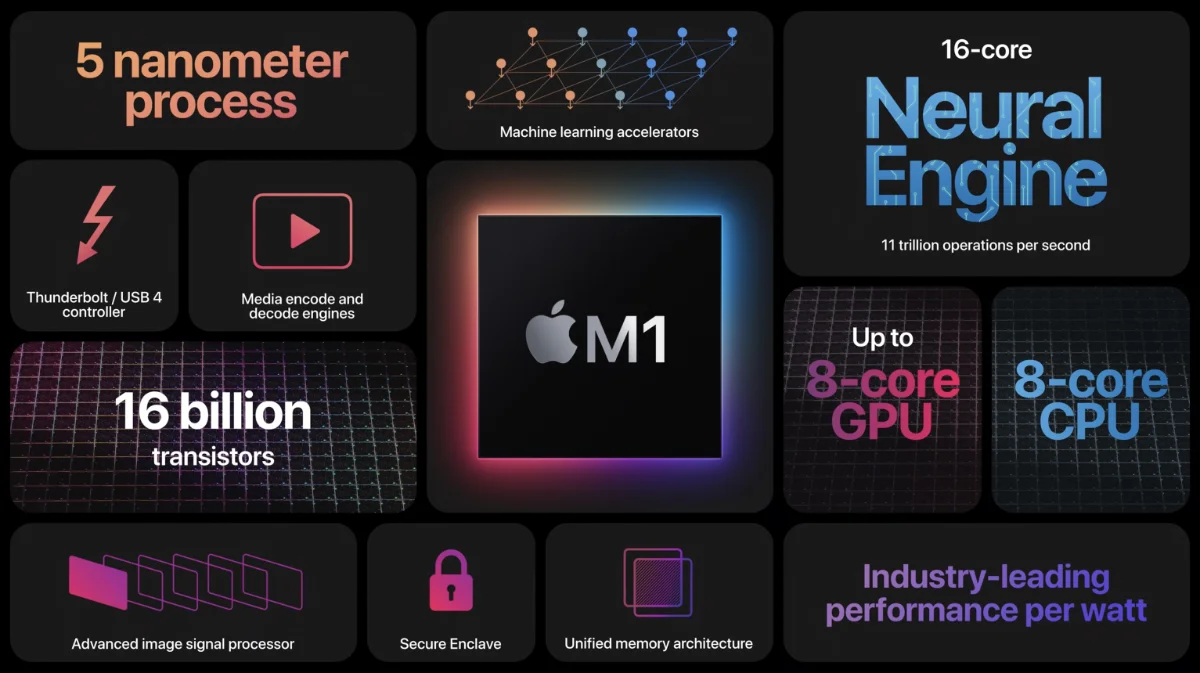
On the other side of the spectrum, there’s the consumer Apple Silicon called M1. No M1 Base, vanilla or plain jane. Just M1. It has 4 efficiency cores and 4 performance cores. There’s around 8 graphic cores and a 16 core neural engine. There’s a rudimentary media engine that helps accelerate processing image and video files. Memory is limited up to 16 GB. I/O is fast enough for only 2 Thunderbolt 4 ports. However, the real super power of this chip is the power consumption, or lack thereof. It could run an entire modern operating system and the associated tasks on less than 10 watts. The MacBook Air is one of the rare laptops that does have a fan, so it is silent and cool. Despite having far less power and capabilities than the pro sibling, the M1 was revolutionary and showed Apple vision of the future.
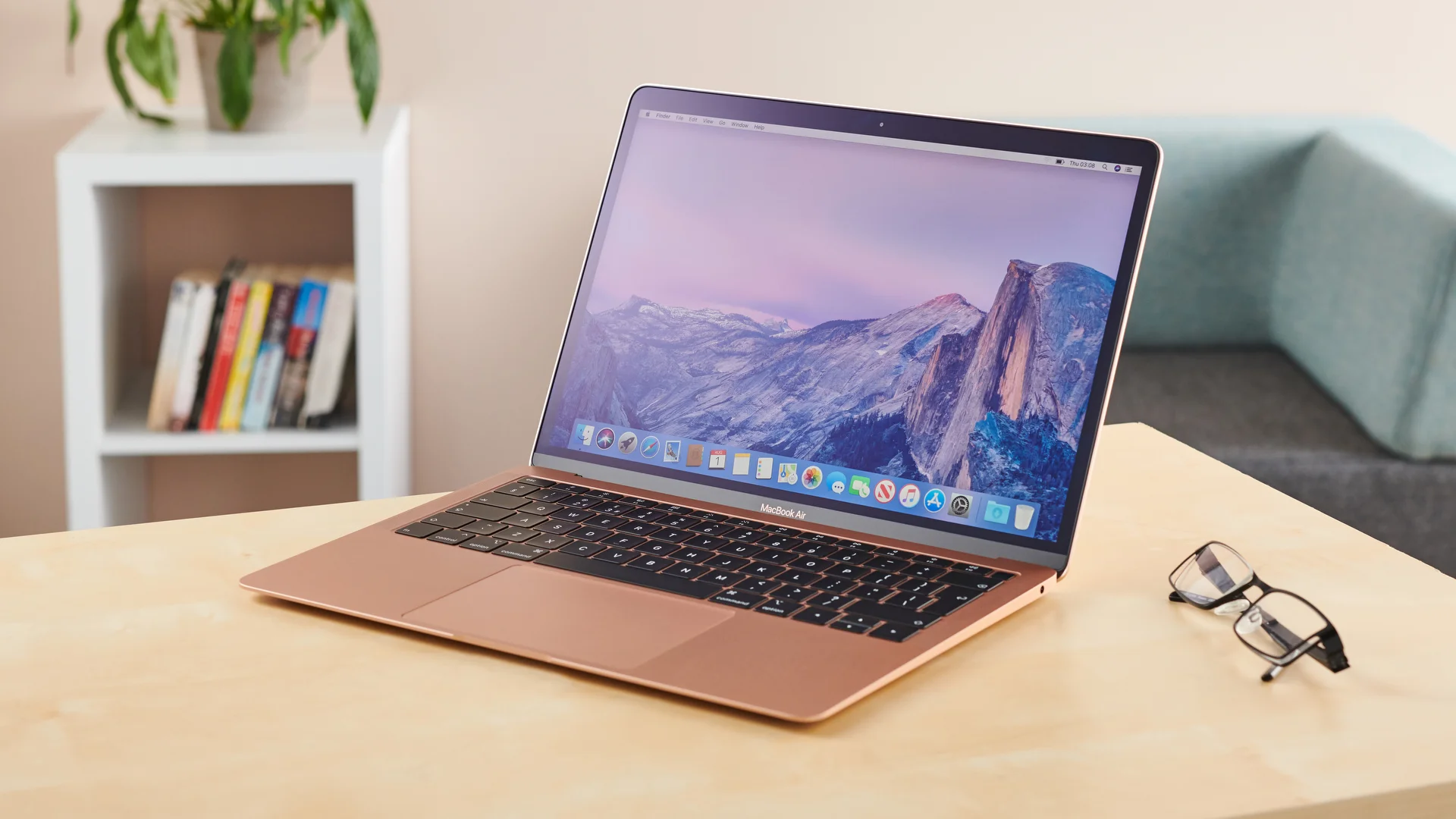
As Apple deals with cards that it has on its hands, the pathway becomes more clearer: moving forward, Apple is going to make two kinds of chips which reflect their product lineup. The chips are going to be SOCs or Systems on Chip where everything that can be integrated will be integrated. This means graphic, processing, I/O, memory controller, neural engine for machine learning, media encode / decode engine, storage controller and many more. Everything will be plugged into the chips: memory, storage, networking, I/O ports like HDMI and USB-C or Thunderbolt.
As for the types of chip, there will be two types: consumer and professional, just like their Mac line up. The consumer will be focused on efficiency and low power consumption. This is because Apple has a workflow team and they have concluded that the consumers are mostly surfing the web, consuming content, making office work like doing the excel sheet and writing emails and of course, the occasional gameplay (most gameplay will be done on a console or iPhones).
The professionals are focused on raw performance and connectivity. So they are focused on their target market which is content creation and building the apps themselves. For the professional, it will have a multitude of options depending on the price bracket. It will be based on a single base chip and joined together to give a variable price and performance envelope.
Intel Core i9 12th Gen
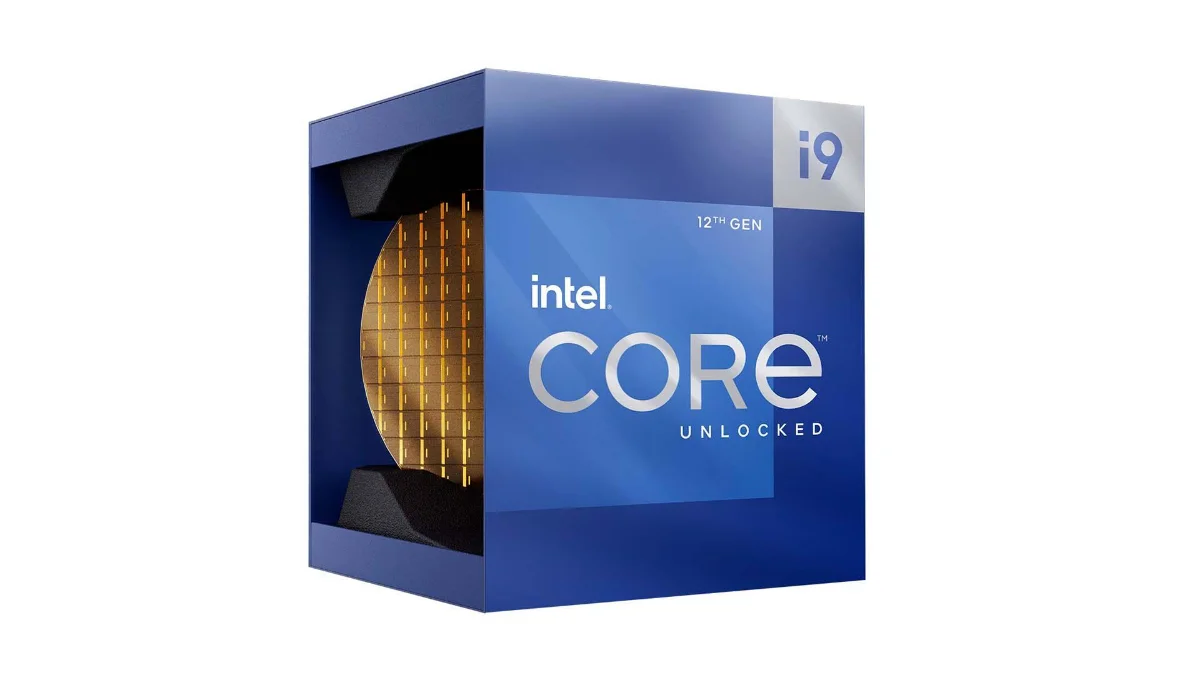
The 12th generation of Intel Core represents a big change for Intel in terms of processor design. For the first time and taking cues from mobile processors, the 12th gen Intel Core has used the big.LITTLE concept of processor design: having slow but efficient cores for light tasks and fast power hungry cores for heavier workloads. The results for Intel’s top of the line i9-12900K: 8 performance cores and 8 efficiency cores which the 8 performance cores can do two threads at once while the efficiency cores can do single threads. The end result is the operating system sees 24 cores in a single chip.
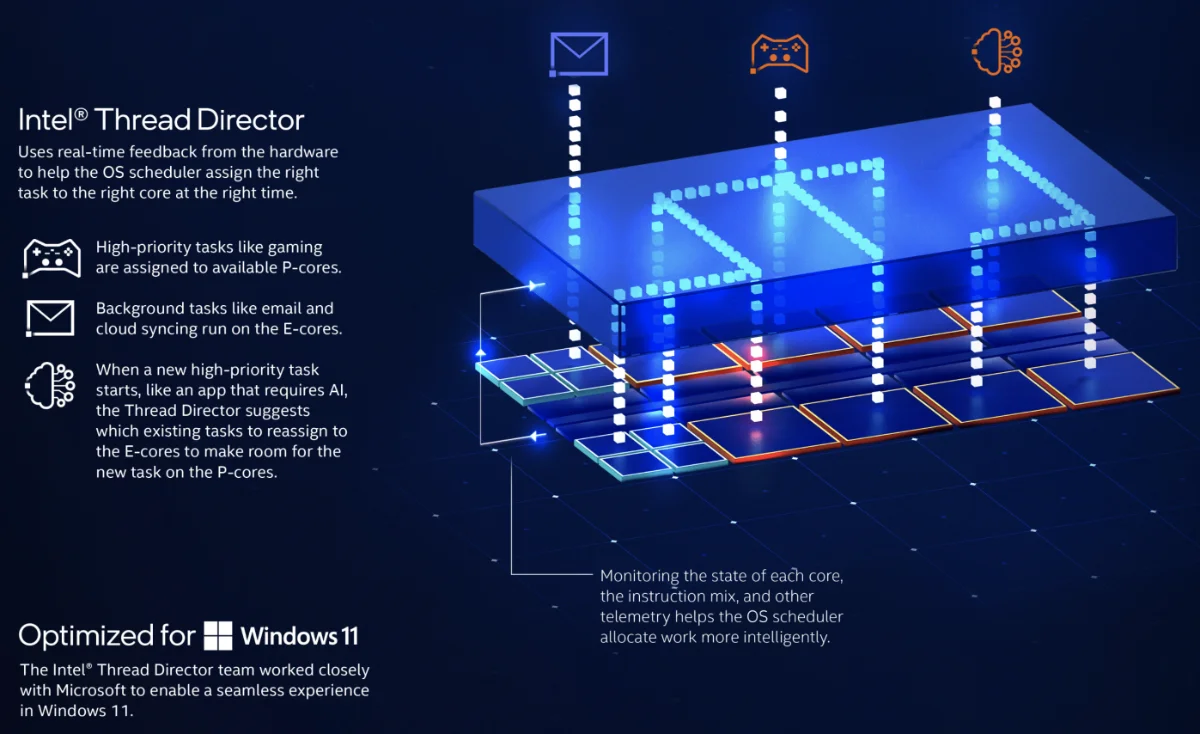
To handle the design departure, Intel has created the Thread Director, a hardware drive to tell the operating system like Windows 11 that the CPU has two kinds of cores and the OS can send the appropriate job to the appropriate cores. You do not want to end up in a situation where the weak efficiency core is trying to process requests from a real time first person shooter like Call of Duty.
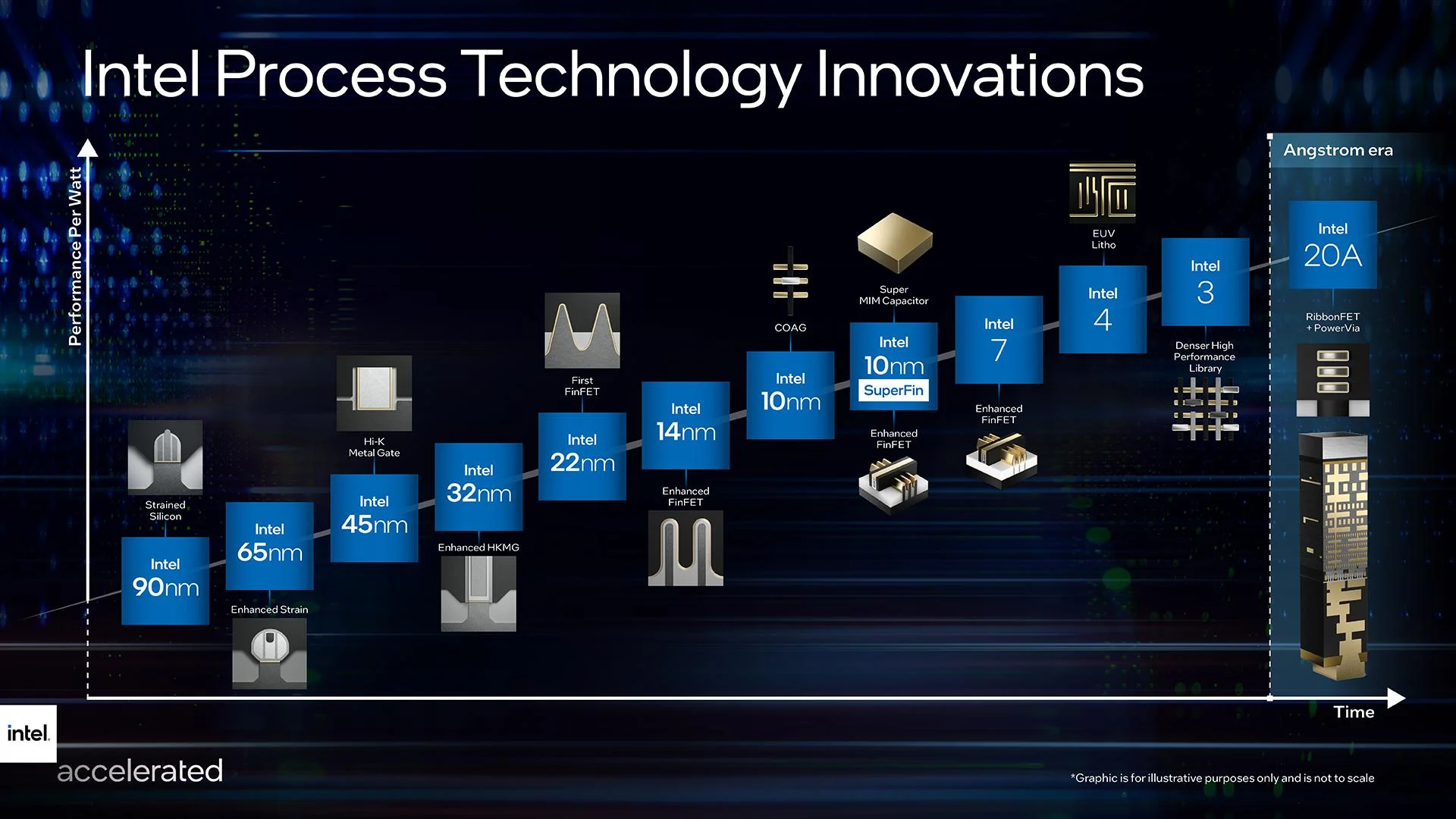
Another major improvement is a brand new manufacturing process which Intel calls, Intel 7. It is a marketing term to denote that the process is similar to a 7nm manufacturing process, although in reality it is an improved version of the 10nm manufacturing process that Intel has used over the years. There is some truth in Intel marketing because as we move towards building circuits that are just a few atoms wide, the feature size which used to denote how intricate the manufacturing process is not longer a reliable and accurate metric. Despite Samsung through 4nm, TSMC throwing 5nm and Intel throwing Intel 7 which seems like 7nm but in reality a much improved 10nm, but the reality is Intel’s 10nm in Intel 7 is much smaller than what a 10 nm feature looks like.
One of the tricks that Intel employed for the 12th end Core processor is the ability to ramp up not only the clock speed, but the Thermal Design Power (TDP) based on need. Typically, the i9-12900K TDP is around 125 watts, but when it hits a heavy workload, the TDP can ramp up to 241 watts, almost double then the base. This means that the new i9-12900K can sustain a heavy workload longer than the previous generation. However, the caveat is that system builders need to account for the extra heat generated when doing sustained workloads.
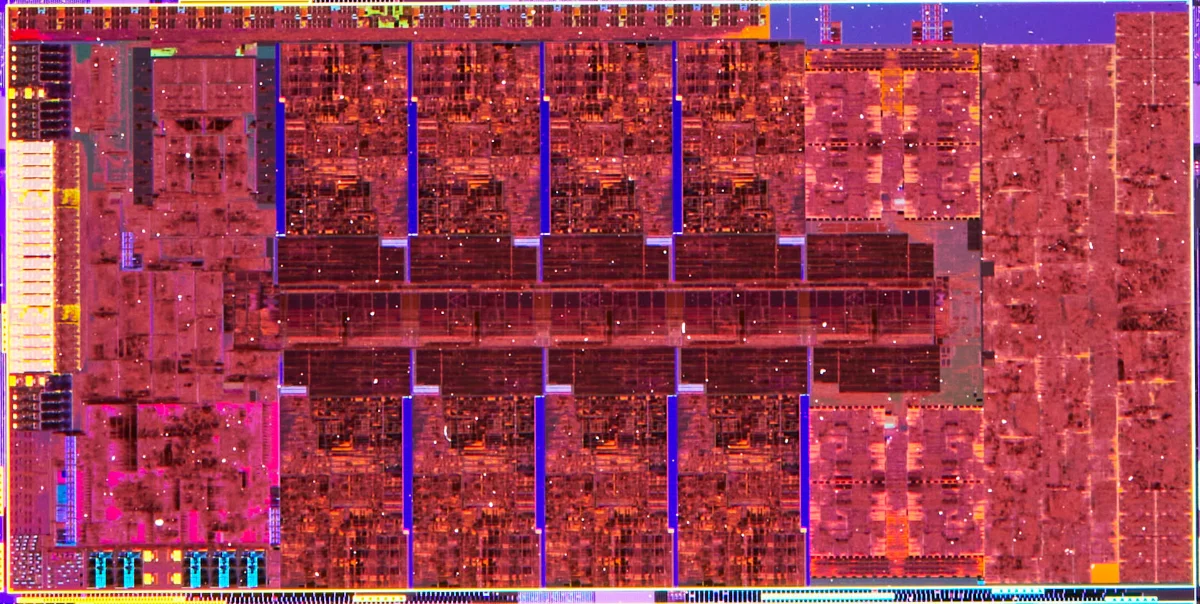
And there is the other laundry list of features that Intel built up over the years: Gaussian and Neural Accelerators for machine learning workloads, VT-x for handling virtual machines, Turbo Boost to give bursts of power in heavy workload environments.
Performance Comparison
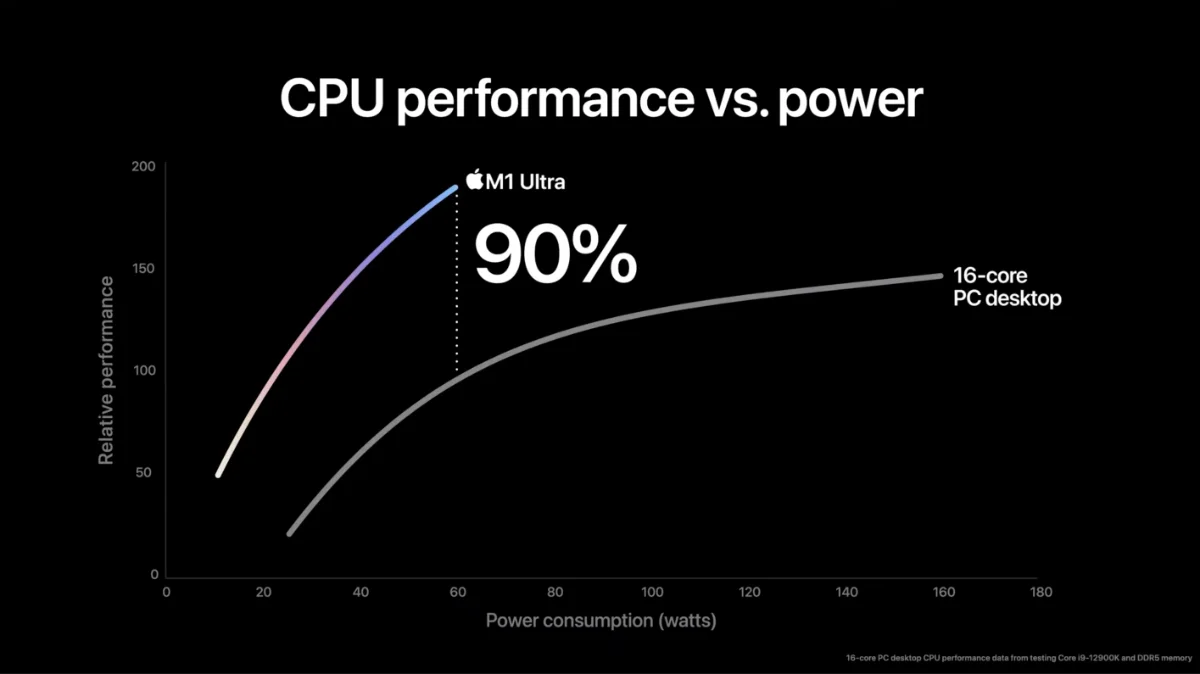
As usual, Apple likes to make vague and broad claims when it comes to their processor performance. In the M1 Ultra presentation, Apple claims that the M1 Ultra has higher performance than Intel Core i9-12900K while using a third of the power. With using a graph like relative performance and Apple did not mention their testing methodology, skeptics were abound.
Now at this writing, there are no hands-on reviews on the Mac Studio so no 3rd party data on benchmark scores. The one that we have gone for is somebody leaked benchmark scores on benchmarking websites. So we will have to go on this data, which looks very plausible at the moment. When we have more official data from 3rd party reviewers, we will update this page to reflect real world performance.
As always, we are a bit wary of using benchmark scores as the single matrix to determine a chip’s performance. One thing about benchmark scores, they tend to measure bursts of work instead of sustained long workloads that are typical in a professional environment which include creating a 3D model from laser scans, CGI rendering for a feature length film and so on. Benchmark also underscores the various accelerators that Apple, Intel and Nvidia utilize to improve performance on specific workloads, for example the media engine. Alas, until we have a better way to measure performance on a chip, benchmarking is the best worst way to do so.
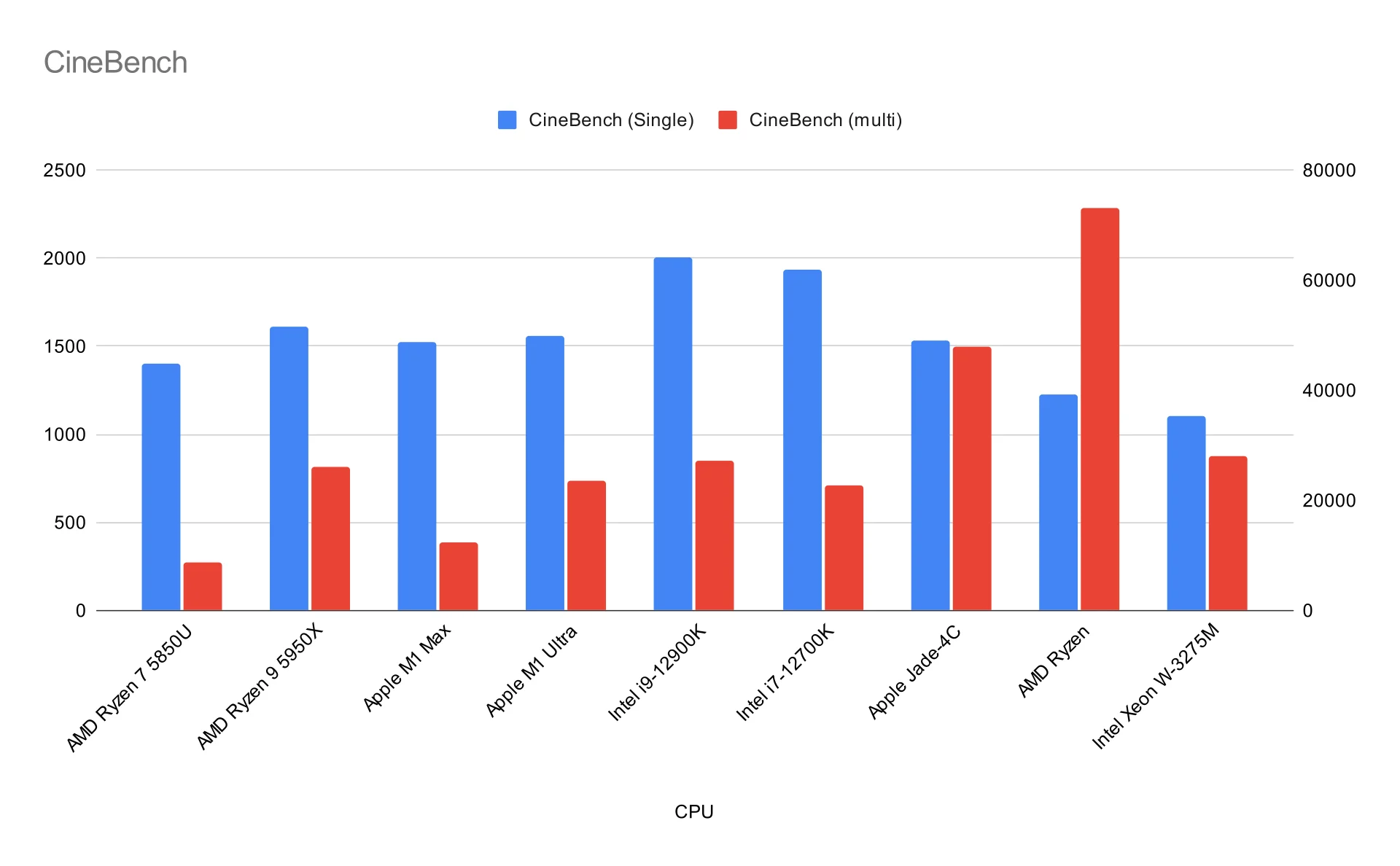
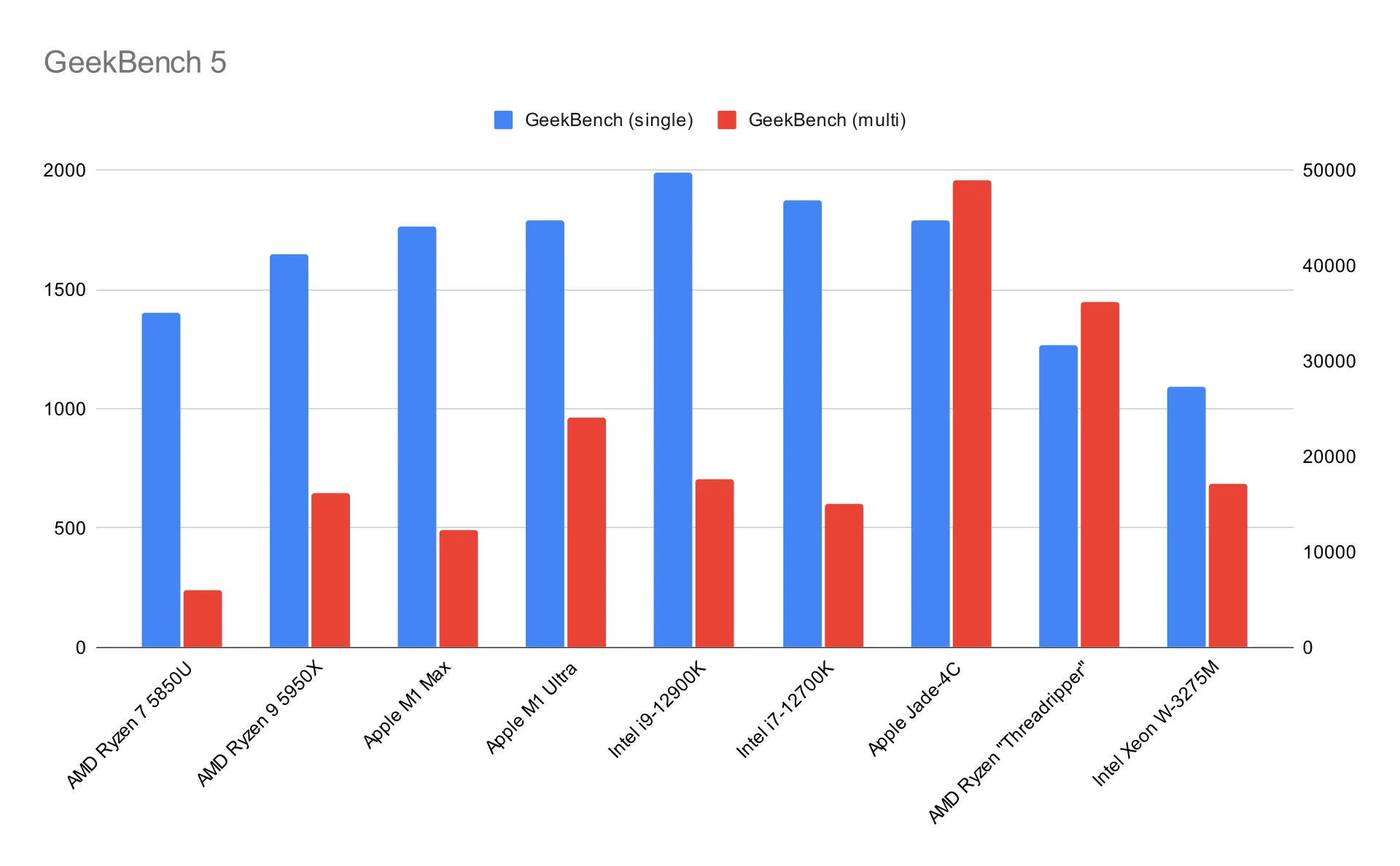
That being said, the M1 Ultra is a solid performer that is extremely competitive with Intel’s best of the best. What is more startling is that the M1 Ultra, which is available on a $4,000 Mac Studio, a complete computer beat out a $7,000 chip that Intel made around 2 years ago. And that $7,000 chip is no ordinary chip: Intel Xeon W-3275M which has 28-cores, can support 1.5 TB ECC RAM, around 38MB on die cache, 6 memory channels and TDP of around 205 watts. It is a chip that is designed for servers and workstation and Apple just threw it under the bus.
At list price, the Intel i9-12900K costs around $615 and to match video performance, you need the Nvidia RTX 3080 Ti which costs around $1,800 or Nvidia RTX 3090 which costs around $2,400. Add around $1000 to $1,500 for other parts, and you will find the $3,999 asking price for the M1 Ultra Mac Studio is reasonable.
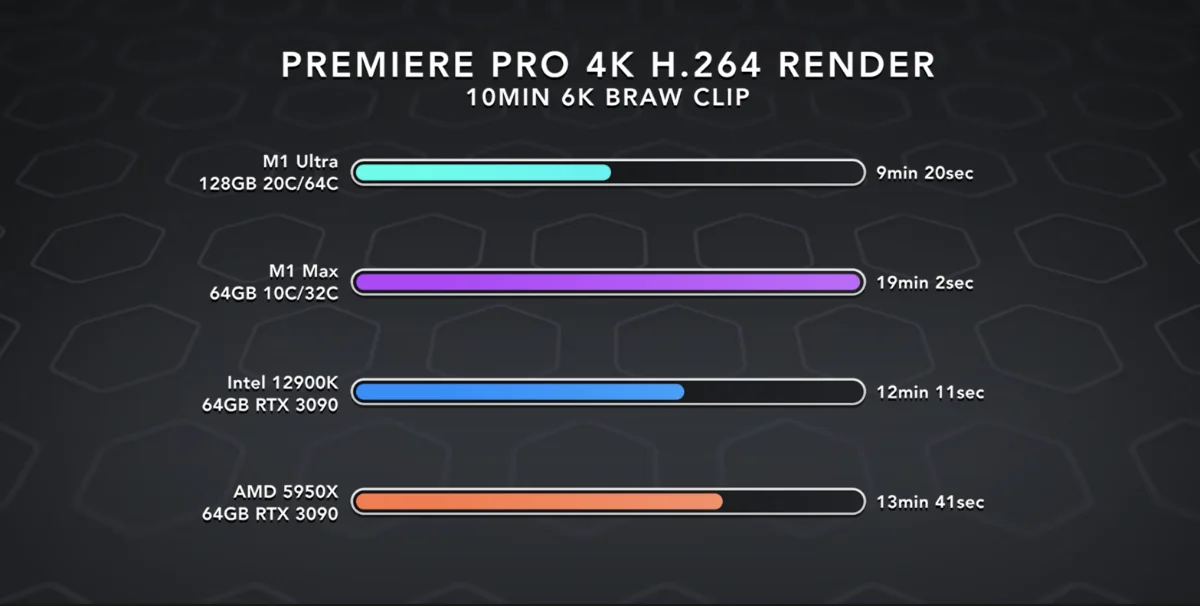
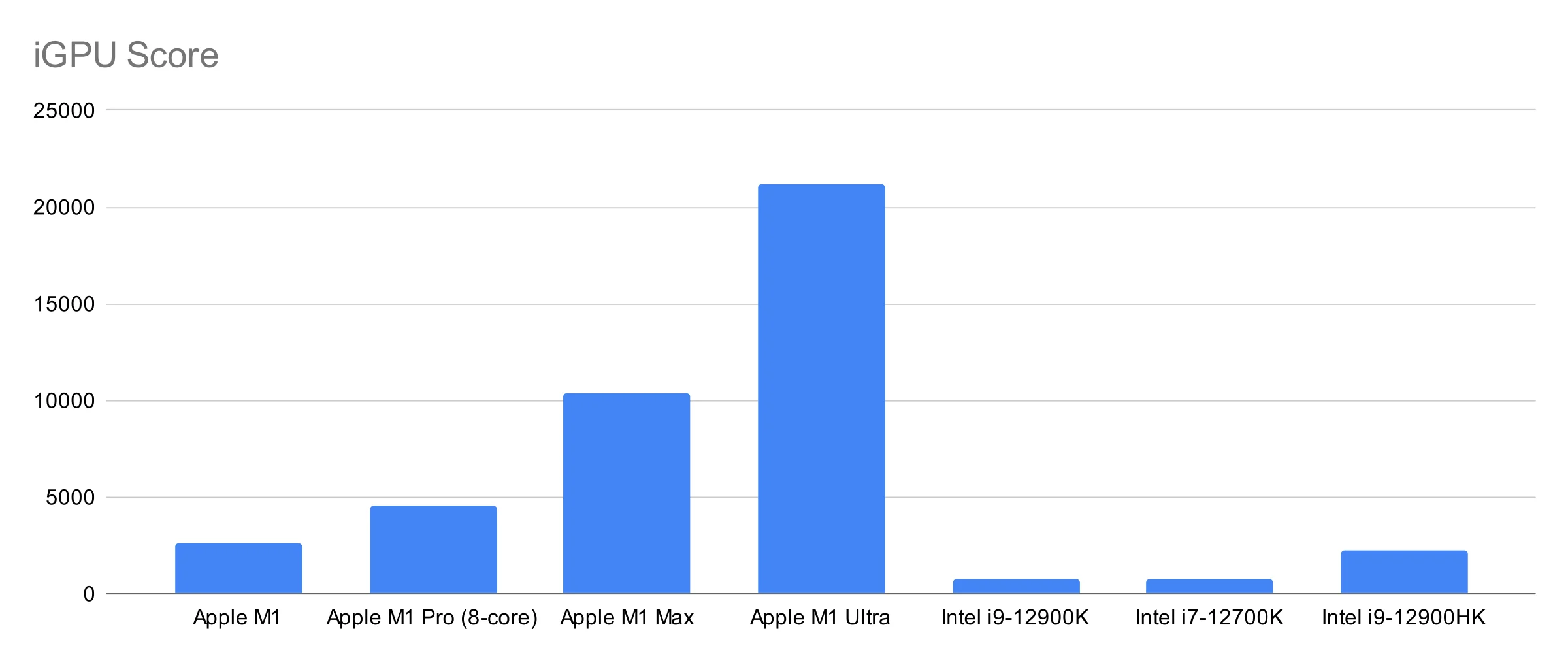
Conclusion
Based on early results, there is no doubt that the M1 Ultra is a solid competitor to Intel’s best chips. However, there are a few issues with M1 Ultra which is not a particular problem, but a general problem with Apple Silicon: optimized software that runs well on Apple Silicon and Intel especially for AAA games.
Apple has no doubt demonstrated that they can build a solid hardware platform and with the right optimization, you can have world class software running on it. Now Apple has to help developers to optimize their software to get the most out of the M1 Ultra and future Apple silicon, which I think is what Apple is doing in the background.
As for Intel, they are no longer king of the hill which was the case just two years ago. The chip making environment has just gotten more and more competitive and in the end, it is good for us consumers: we get better chips every year with lower prices. Competition is good not only for the market, but for everyone else too.
Plug
Support this free website by visiting my Amazon affiliate links. Any purchase you make will give me a cut without any extra cost to you
- Mac Mini M1 - Amazon USA / Amazon UK
- iMac 24" M1 - Amazon USA / Amazon UK
- Mac Studio - Amazon USA
- MacBook Air M1 - Amazon USA / Amazon UK
- MacBook Pro 13" M1 - Amazon USA / Amazon UK
- MacBook Pro 14" M1 Pro / M1 Max - Amazon USA / Amazon UK
- MacBook Pro 16" M1 Pro / M1 Max - Amazon USA / Amazon UK
- Accessories:-
- Wireless earphones / headphones:-
- AirPods - Amazon USA / Amazon UK
- AirPods Pro - Amazon USA / Amazon UK
- AirPods Max - Amazon USA / Amazon UK
- Buyer's Guide:-
